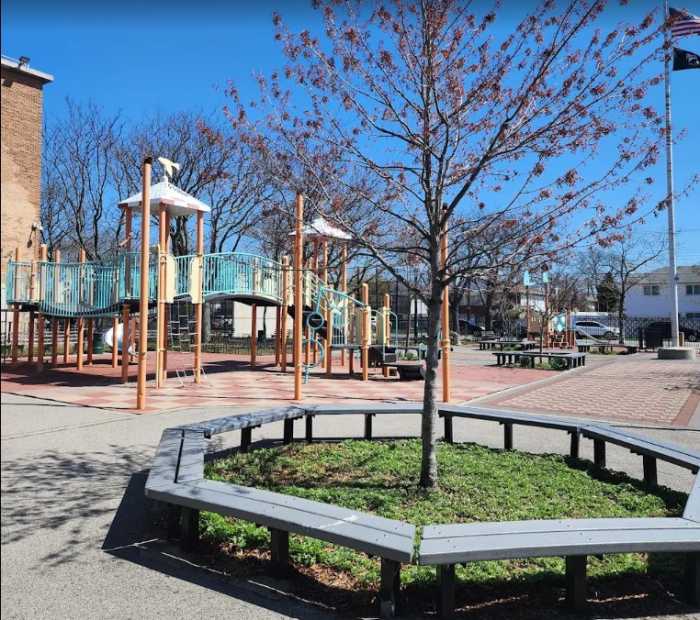FDNY Answers Calls Quicker Than Ever
Mayor Michael R. Bloomberg and Fire Commissioner Salvatore J. Cassano announced two new records achieved by the Fire Department in 2012: the fewest civilian fire deaths in city history and the fastest average ambulance response time ever achieved for life-threatening medical emergencies.
There were 58 fire deaths in 2012, four less than the previous record low of 62 set in 2010. The FDNY’s Emergency Medical Service averaged an ambulance response time for lifethreatening medical emergencies of 6:30-a second faster than the previous record of 6:31 set in 2011.
The mayor and commissioner made the announcement during a promotion ceremony for FDNY members last Wednesday, Jan. 2, at the Training Academy on Randall’s Island.
“With record low number of murders and shootings and the fewest fire deaths in our city’s history, 2012 was a historic year for public safety,” said Bloomberg. “The FDNY has consistently improved fire safety over the past decade and has continued to drive response times to historic lows. These achievements and the efforts by our firefighters, EMTs and paramedics to save lives-while putting theirs on the line-is the reason fewer New Yorkers died as a result of fire in 2012 than ever before.”
“These historic achievements are a direct result of the dedication of the Department’s number one resource- our members,” added Cassano. “While the demand for the Fire Department’s services has increased in the last year, and despite a devastating storm that taxed the department at every level, we have continued to improve on our core missions of responding quickly to medical emergencies and reducing fire related deaths.”
Fire deaths declined 12 percent in 2012 compared to 2011 (when there were 66 deaths) and it was the seventh consecutive year with fewer than 100 fire related deaths-which has occurred only 12 times in nearly a century of record keeping dating to 1916. The decline in fire deaths during the last decade is unprecedented, with a 43 percent decline since 2001.
From 2002 to 2012, an average of 85 deaths occurred each year, down from an average of 140 deaths a year during the 1990’s. During the 1980s, the city averaged 236 fire deaths annually, and in the 1970s, 278 people died on average each year in fires. The record high year for fire deaths was 1970, when there were 310.
In 79 percent of 2012’s fatal fires (46 of the 58 fire related deaths) there was no working smoke detector present. Seniors were the largest group who lost their lives in fires, with 25 of the deceased aged 70 or over (43 percent of all deaths).
The top causes of fatal fires in 2012 were accidental electrical fires (17), smoking (15), incendiary fires (nine) and cooking-related (seven).
Structural fire response time in 2012 was 4:04, two seconds higher than last year when it was 4:02 due in part to the large call volume that occurred during and after Hurricane Sandy when the FDNY responded to nearly 100 serious structural fires. Average fire response time remains in line with the record lows recorded since 2009 when the city implemented expedited dispatch protocols and introduced Unified Call Taking, streamlining the 911 system and shaving valuable seconds off response times
The new, fastest ever average ambulance response time was achieved by EMS despite a 3.4 percent increase in overall call volume-and a record-setting 1.3 million calls handled. More than 43,000 additional calls were received in 2012 compared to 2011-including a new one-day record during Hurricane Sandy of 5,681 emergencies.
The new record fastest ambulance response time of 6:30 is calculated for the most life-threatening types of medical emergencies known as Segment 1-3 calls, and includes reports of cardiac arrest, unconscious, and choking patients.
The total number of structural fires citywide increased about one percent in 2012 compared to 2011, while non-structural fires decreased by 10 percent to the fewest number recorded in city history.
The reduction of fires and fire deaths in recent years has occurred while the FDNY’s Fire Safety Education efforts were dramatically increased, reaching millions of New Yorkers with fire safety information and education. In 2012, Fire Safety Education teams delivered 6,651 presentations to 593,496 individuals at schools, community centers, businesses and senior centers; distributed 22,209 free smoke/carbon monoxidee (CO) alarms and 88,903 batteries for use in smoke/CO alarms.
Bloomberg and Commissioner Cassano reminded the public to observe the following fire safety tips this winter:
– Install smoke alarms and carbon monoxide detectors. If you already have detectors installed, make sure you test them at least once a month.
– Space heaters should be on a flat surface at least three feet from anything that can burn and should always be turned off when leaving a room or going to sleep.
– Never use an extension cord with a space heater; it should be plugged directly into an outlet.
– Never use a space heater with a frayed or damaged cord.
– Never use the kitchen oven or gas range to heat your home or apartment. This could lead to an accumulation of dangerous levels of carbon monoxide.
– Use electric blankets only if they have the Underwriters Laboratories (UL) mark and are less than 10 years old. Blankets that are 10 years or older account for 99 percent of all electric blanket fires.
– Call 311 to report lack of heat or hot water in your apartment or home.




































